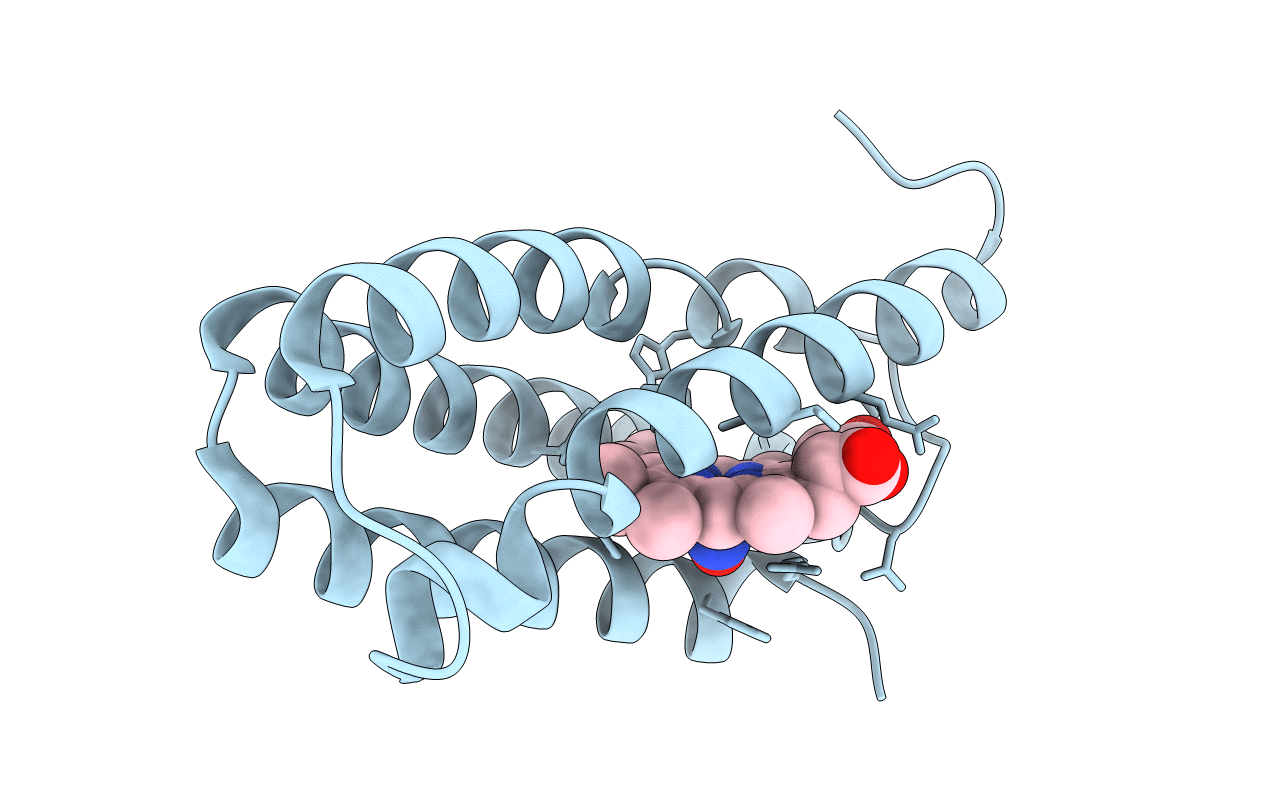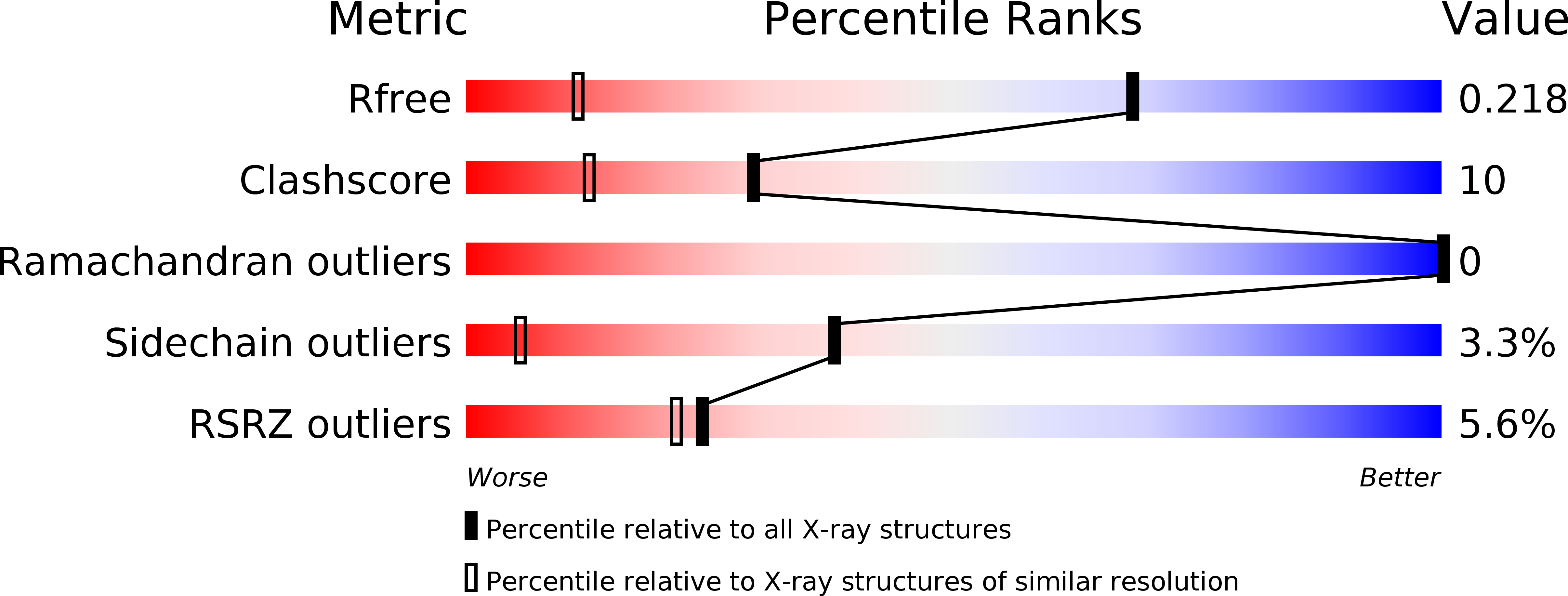
Deposition Date
2014-10-31
Release Date
2015-09-09
Last Version Date
2024-11-13
Entry Detail
PDB ID:
4D4X
Keywords:
Title:
Nitrosyl complex of the D121I variant of cytochrome c prime from Alcaligenes xylosoxidans
Biological Source:
Source Organism:
ACHROMOBACTER XYLOSOXIDANS (Taxon ID: 85698)
Host Organism:
Method Details:
Experimental Method:
Resolution:
1.30 Å
R-Value Free:
0.21
R-Value Work:
0.16
R-Value Observed:
0.17
Space Group:
P 65 2 2


